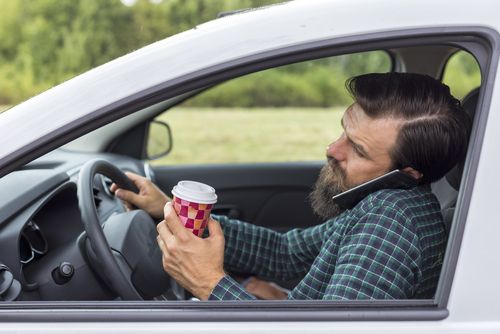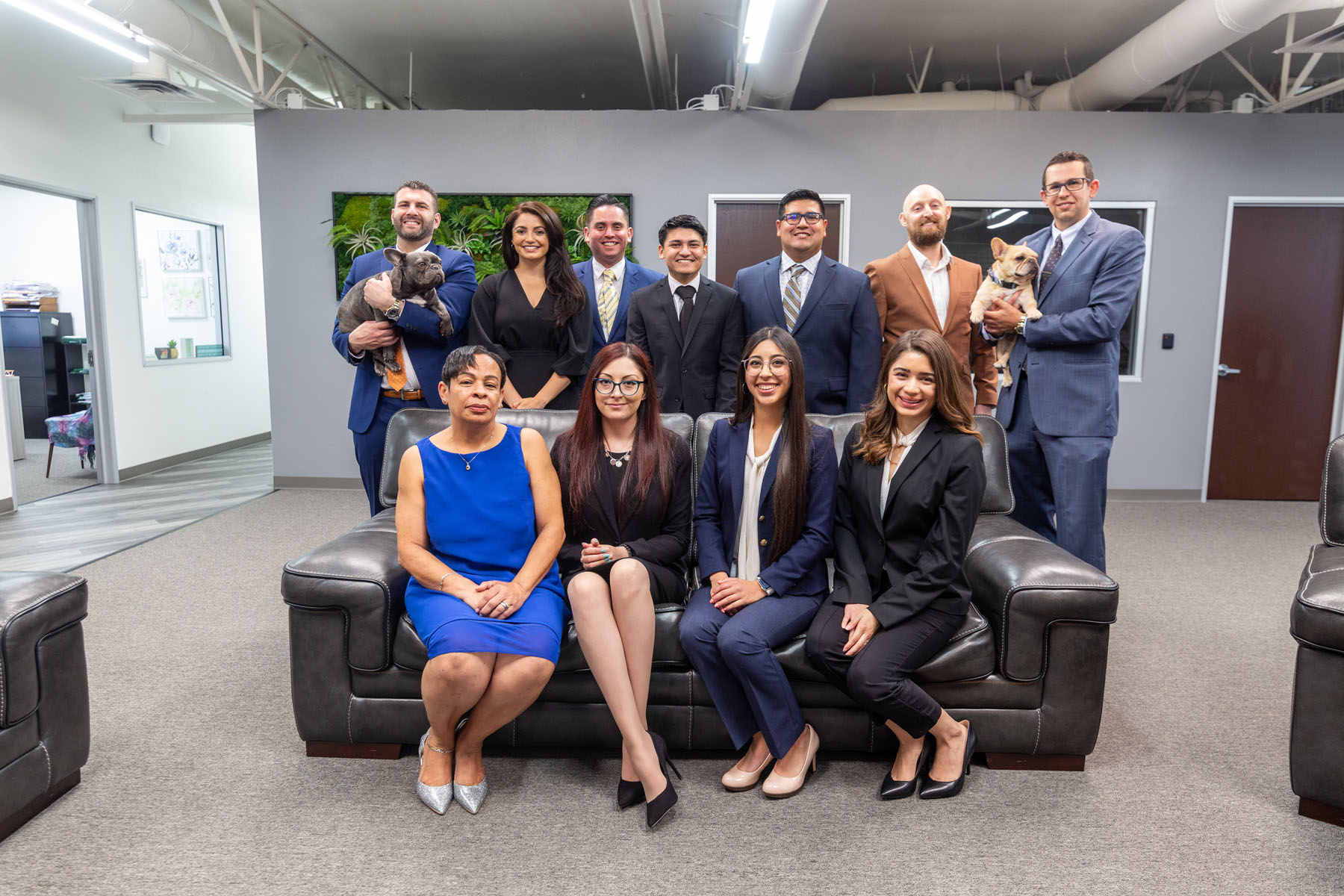Fatal car accidents and road crash injuries are a serious global health concern, and for good reason, especially if you look at the following annual global road crash statistics. They are from an infographic published by the World Health Organization (WHO):
- Nearly 1.25 million people die in road crashes each year, on average there are 3,287 deaths a day.
- An additional 20-50 million are injured or disabled.
- More than half of all road traffic deaths occur among younger adults, ages 15-44.
- Road traffic crashes rank as the 9th leading cause of death and account for 2.2 percent of all deaths globally.
- Road crashes are the leading cause of death among young adults, ages 15-29, and the second leading cause of death worldwide among young people ages 5-14.
- Each year, nearly 400,000 people under 25 die on the world’s roads, on average over 1,000 a day.
- Over 90 percent of all road fatalities occur in low and middle-income countries, which have less than half of the world’s vehicles.
- Road crashes cost USD $518 billion globally, costing individual countries from 1-2 percent of their annual GDP.
- Road crashes cost low and middle-income countries USD $65 billion annually, exceeding the total amount received in developmental assistance.
- Unless action is taken, road traffic injuries are predicted to become the fifth leading cause of death by 2030.
In the United States, an infographic on car accidents was shared by an auto insurance comparison site. Based on data extensively collected from various authority references, it shows the following data:
- There are nearly 40,000 fatal car accidents per year in the U.S.
- Each day, more than 90 Americans die in car accidents.
- On average, 2 million drivers experience a permanent injury every year.
- Almost 8,000 people are killed in traffic accidents involving drivers aged 16-20 annually.
- The most common causes of accidents resulting in death are drunk driving (32 percent), speeding (31 percent), and distractions (16 percent).
- Some 58 percent of fatal car accidents involve only one vehicle, and 38 percent are caused by a traffic collision.
- When it comes to fatal car accidents by state, most occurred in Texas and California during 2018.
- According to the statistics, most fatal injuries happen during weekends.
- Each year, more than 1,600 children younger than 15 die in traffic accidents.
Moreover, the National Highway Traffic Safety Administration (NHTSA) estimated in 2017 that car accidents cost the country $871 billion annually. This figure covers both economic costs and the societal harm caused by road fatalities. Social costs include loss of productivity, court and medical costs, expenses involving emergency services, property damage, and insurance administration costs.

Distracted driving
A major culprit of distracted driving is cell phone use. Drivers who are busy texting, talking or looking at their phones are inattentive to what is going on around them.
By driving while on the phone, they are likely to ignore stop signs and other road signs. They also increase their risk of colliding with another vehicle or some other structure on or along the road, and even hitting a pedestrian.
- Every day, nine people die because of distracted driving in the US.
- Even when the law forbids it, one out of three people still text while driving.
- One in every five crashes reports distraction as a factor in the accident.
- If a driver is texting and driving, the likelihood of the vehicle crashing increases by 23 times.
- Forty percent of American teenagers say they have ridden in a vehicle where the driver was on a cell phone and using it in a way that put their lives at risk.
- The amount of brain activity dedicated to driving is reduced by 37 percent when the driver is using a cell phone simultaneously.
- It takes an average of 4.6 seconds to send or get a message, requiring a driver’s eyes to be off the road – this is the equivalent of driving across an entire football field, blind, at a speed of 55 mph.
However, using the phone is not the only factor that leads to distracted driving. There are other causes of distraction while on the road, including the following:
- GPS use: The global positioning system app (GPS) has become a driver’s best friend. However, there is such a thing that police call “the GPS-assisted crash,” which stems from two things: drivers blindly following GPS instructions, which may be erroneous or not updated, and attempting to program their GPS while driving. Taking your eyes off the road to look at or check your GPS is a risky move. What you can do instead is position the GPS in such a way that you can use it without necessarily having to take your eyes off the road. You can also turn up the volume so you can clearly hear the instructions while also keeping a close watch on what’s in front of you.
- Grooming, and applying cosmetics or makeup: There are days when you don’t have time to fix yourself up before you need to get into your car. For some people, this becomes an excuse or a chance to put on some finishing touches like lipstick, applying deodorant, or even styling their hair while on the road or stuck in traffic. People need to remember that accidents can and do happen anytime the hands are off the wheel and the eyes off the road.
- Conversing with passengers:If you have someone in the car riding with you, talking to them seems only natural. In fact, it is likely you’ll feel somewhat uncomfortable and rude if you don’t. However, as the driver, your priority is to pay attention to the highway or road you are driving on. There’s no need to turn around to acknowledge the other people in the car.
- Trying to handle kids and or pets: As much as possible, avoid driving alone as an adult when you’re taking your kids or pets, or both, with you. To prevent your pet from moving around in the vehicle, put it in a crate where it will be comfortable and safe. Children need to have their seatbelts fixed, and must be instructed to not distract you from driving. Better yet, have another adult around to attend to them while you focus on the road.
- Not paying attention to the road: Aside from the aforementioned sources of distraction, there are other reasons why a person can start driving around unfocused. For example, you may have found yourself busy looking for a house number, address, landmark, or the next turn you’re supposed to take. You can also be distracted by the sight of a roadside accident, or a beautiful waterfall you’re passing by – remember, you need to focus on the road.
- Adjusting vehicle controls or the music volume:Your favorite tune may be on, or you want some music to wake you up. You could be itching to change the temperature because it’s either too hot or too cold. Compose yourself and park somewhere safe so you don’t have to be driving while trying to do these things.
- Zoning out: It sometimes happens when you least expect it as it’s hardly deliberate. You may be on the road but find yourself daydreaming or making plans for the evening or the next day in your mind. You basically go on auto-pilot mode, especially in familiar routes. You need to shake yourself out of your reverie and get your mind on the road.

Other causes of car crashes
Although distracted driving is a major factor in vehicular accidents, there are other compelling reasons why car crashes occur.
Drunk driving
Considered the deadliest cause of car accidents in the US, drunk driving killed one person every 48 minutes in 2017, or about 30 people every day.
Drug use
While DUIs involving alcohol are quite commonplace, the use of dangerous, illegal or recreational drugs can also lead to fatal accidents. Avoid driving under medication as well, especially if you are under the influence of illegal substances.
Reckless driving
Some people carelessly change lanes or do so without warning, or they drive aggressively on the road. Remember that nothing good can come out of being impatient or careless while driving. You will only end up endangering the lives of others and yourself.
Speeding
When people are in a hurry or running late, the temptation to speed along becomes too great. However, speeding is also the second most common factor leading to accidents. Therefore, stick to the speed limits and avoid speeding at all costs.
Tailgating
Avoid getting too close to vehicles in front of you. Always keep a safe distance – this ensures you can safely turn or use your brakes when necessary, and avoid hitting the car in front of you.
Incorrect turns and going against the traffic flow
Always make sure that you are driving on the correct lane, and be extra cautious about this when you are driving in an unfamiliar place. Pay attention to road signs indicating one-way streets, no U-turns, and the like. Use your hand and lights for proper signaling, and never attempt to drive against the flow of traffic.
Trying to beat the red light
An all too common driving mistake is attempting to beat the red light. Red means stop – it doesn’t matter if it seems you own the road. When someone rushes through a red light, it puts the other drivers, who have a green light and are supposed to go, at risk.
Weather conditions
Heavy rains, fog or snow can lead to less-than-ideal driving conditions. Slow down when the road gets slippery. If there is low visibility, park somewhere and wait untill the road clears up enough to ensure safe driving.
Poor lighting or night driving
Since it is dark at night, it naturally becomes more difficult to drive. This is especially true when you find yourself in poorly-lit or totally dark sections of the road. Be alert and be sure to use all your lights so you remain visible to oncoming vehicles, as well as to light your path.
Presence of potholes
It’s always difficult driving along a road or street that’s riddled with potholes. They can also damage your car if you are unable to navigate around them properly. If there is no available alternative, carefully drive and avoid them if you can while being considerate of both pedestrians and other drivers.
Tire damage and blowouts
Getting a flat while on the road can be quite dangerous as it can lead you to swerve suddenly. This is why not speeding is so important. By driving at a safe speed, you can pull over whenever possible, and change the damaged tire or get it replaced.
Automobile defects
Factory or design defects are a reason why vehicle manufacturers end up recalling their products. If your car model happens to be part of a recall, be sure to bring it in for maintenance or take it to a manufacturer-authorized service center.
Adolescent drivers
Unlike adults, teenagers can be easily riled, anxious, or distracted on the road since they lack the experience and ability to make wise, split-second decisions when exposed to unsafe driving conditions. Adolescent drivers need to learn about defensive driving. You should also remind them not to drive while distracted – whether because of smartphone use, chatting with a friend, or some other reason.
Wild animal crossings
Sometimes you can’t avoid driving through roads where wild animals are known to cross or wander into. It could be bears, elk, deer, wild geese, and the like. Whatever the case may be, be sure to take note of road signs indicating animal crossings, especially when driving through wooded rural areas.
Confusing road signs set up for construction sites
It can happen that road or warning signs set up for construction zones may be improperly placed or confusing in general. To be on the safe side, drive slowly, follow the cones, and be wary of other drivers who may be confused as well.
Road safety – a shared responsibility
The reduction in the number of fatal car accidents is a global objective. However, achieving this objective globally and locally entails the participation and commitment of all stakeholders. It also requires the involvement of multidisciplinary experts such as engineers, auto manufacturers, law enforcement officers, educators, and other interest groups, as well as the community at large.
Most of all, it requires that drivers make a conscious choice to drive safely for the sake of others and themselves.
Do you have a question about the legal side of fatal car accidents? Do you need help with a possible lawsuit involving one? Reach out to us at Batta Fulkerson today.




